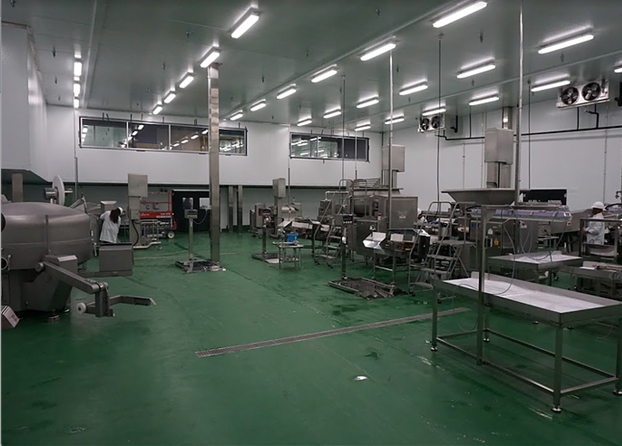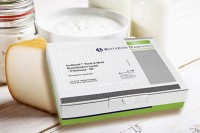Food processing is a multi-trillion dollar industry that encompasses facilities such as bakeries, meat and poultry plants, bottling lines, dairies, canneries and breweries. For all of these food processing plants a commercial flooring system is essential for maintaining a hygienic environment. Few areas of a plant provide as much opportunity for the spread of bacteria, mold, fungi and dust as the floor. Hazardous materials from a contaminated floor can easily be spread from worker’s shoes and mobile equipment. Food processing plants present a unique set of challenges that require careful consideration of floor properties and installation.
Food processing plants floors are subjected to constant, high concentrations of salt, alkaline and oil compounds that substantially degrade the floor and thereby risk food contamination and facility shutdown. These compounds can come from common food production by-products like oils, fats, dairy products, sugar solutions, blood, and natural acids or from harsh cleaners and disinfectants. Even with frequent and thorough cleaning these substances can—and will—result in microbial growth and the spread of bacteria in untreated concrete or poorly installed resinous flooring.

Cleaning floors is an essential part of maintaining food processing operations to keep up with government standards. A proper floor coating is a necessity for dealing with the vigorous, harsh cleaning procedures that typically include very hot water and aggressive cleaning chemicals. Depending on the exposure to corrosive, temperature and moisture conditions a thin film coating may suffice; however, in most cases, a thick, durable floor coating is needed to endure the cleaning operations. If too thin of a coating is used the repeated barrage of high pressure, high-temperature hot water and steam will strip the floor coating. Only an experienced flooring professional can determine the proper floor coating for a facility.
In addition to the properties of the floor coating, proper installation is essential for maintaining a hygienic, safe facility. If a floor is not seamless even the best floor coatings are vulnerable to germ buildup within gaps and cracks. To prevent harmful substance accumulation, a seamless coving transition from the floor to the wall is needed. Not only does that make the floors unsanitary, but it also can spread to other parts of the facility, equipment and product. Coving also aids in the cleaning process by allowing for hosing around the sides and corners of the room where germ buildup is most common.
An often-overlooked—yet critical—aspect of floor installation is having the proper pitch to promote water drainage. Having pools of water is not only dangerous for workers but for product safety. Such an examples of this issue is the Listeria outbreak at cantaloupe producer Jensen Farms, which led to 33 fatalities, 143 hospitalized victims, and ultimately, the end of their business. In the 2011 FDA released a report that focused on “Factors Potentially Contributing to the Contamination of Fresh, Whole Cantaloupe Implicated in the Multi-State Listeria monocytogenes Foodborne Illness Outbreak”. The conclusion was reached that the leading cause of Listeria spreading was due to a poorly constructed packing facility floor that was difficult to clean and allowed water to pool. The best way to prevent a similar situation at your plant is to make sure you get an experienced flooring expert, who understands your facility’s needs, to choose a floor with the right properties and to properly install it.










